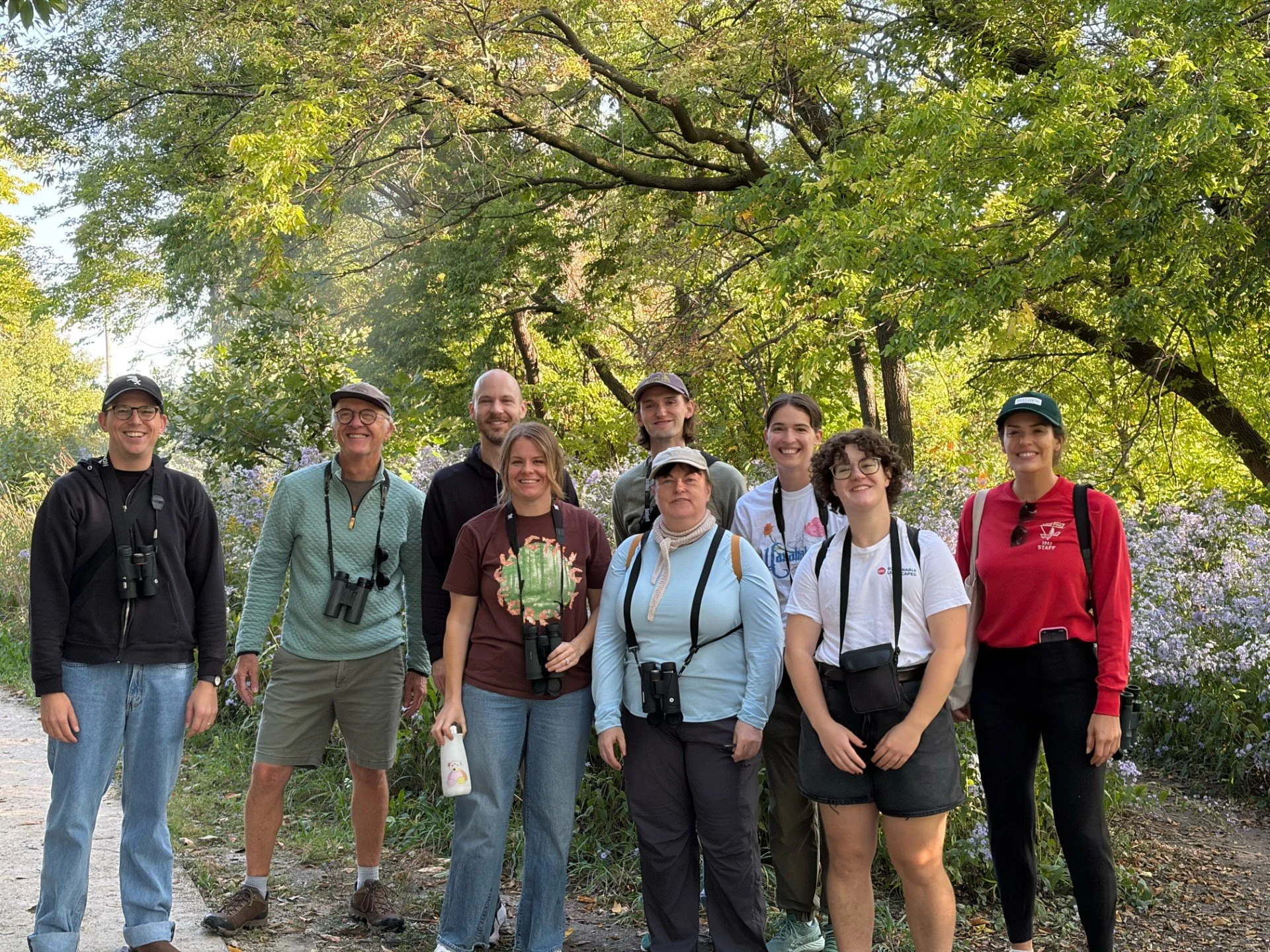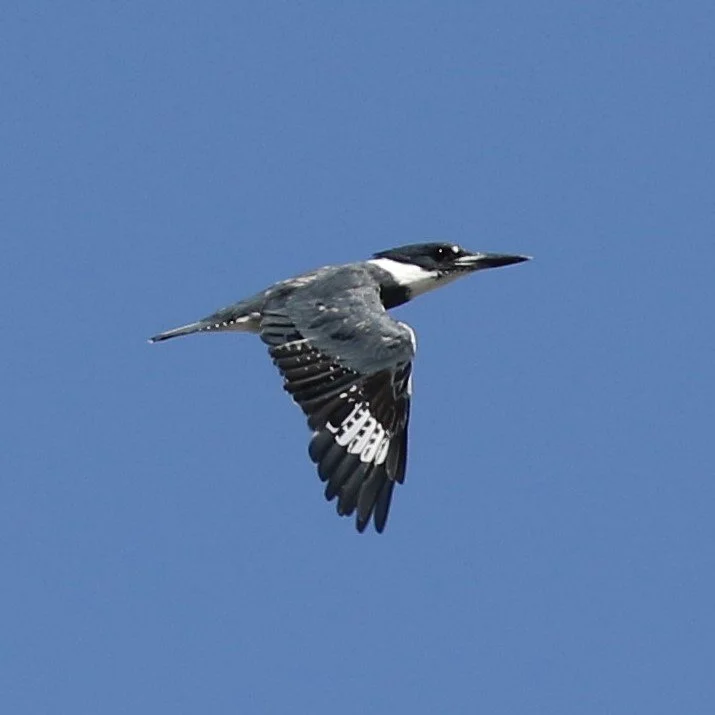Field trip recap: Horner Park
words by Lauren Kostas
A dozen birders met early Saturday, Sept. 2, at a city park to spot resident birds and fall migrants along the Chicago River. COS board members Chris Cochrane and Brighten Jelke led our trip to Horner Park, one of Chicago’s hidden gems for birding. Horner Park is a 54-acre park that sits along the west bank of the north branch of the river in the Irving Park neighborhood.
To get started, our group, which included new and seasoned birders, exchanged names and favorite neighborhood green spaces, including Gompers, River, and Humboldt parks. Before heading to the river, we looked for the Bald Eagle that had been visiting the flood lights next to the ball parks earlier in the week. No luck that morning, but we did quickly spot a Brown Creeper and several Cedar Waxwings as we made our way to the river.
Brown Creeper. Photo by Dustin Weidner, Montrose Point, Oct. 9, 2024.
We walked along a tidy mulch path that took us between crowded beds of prairie plants in full fall display. We were surrounded by bright purple asters, bursting milkweed seed pods, bluestem grass, buttonbush, and black-eyed susans. Flagstone paths stepped down to the river.
One of our trip members lives just on the east side of the river, and he remembered the disruption and emotion of the riverbank restoration project that created the 13 acres of paths and prairie land we were enjoying that day. The project regraded the riverbank, removed dense patches of weeds and invasive shrubbery and installed native wildflowers, bushes and trees, which are now enjoyed by a variety of wildlife and people.
With the morning sun to our backs, we saw a Red-eyed Vireo, Philadelphia Vireo, Rose-breasted Grosbeak, and a Ruby-crowned Kinglet. There were several woodpeckers flying from snag to snag along the river, including the Northern Flicker, Yellow-bellied Sapsucker and Hairy Woodpecker. Warblers on view included the Common Yellowthroat, Palm, Magnolia and American Redstart. There were plenty of American Goldfinches bobbing on grasses and a shy Ovenbird peeked out alongside the path.
Belted Kingfisher. Photo by Walter Marcisz, Burnham Prairie, Aug. 16, 2020.
The river itself was rather quiet, with a few Mallards paddling about. A noisy, jubilant Belted Kingfisher patrolled up and down the water and a Great Blue Heron soared overhead. The complete checklist is available here.
Chris, a passionate advocate for “green birding,” shared some tips for new birders. We chatted about how to use the Explore function in the Merlin app to help prepare for a walk. By applying filters for date and location, you can generate a list of what you might expect to see and help “prime” your ears and eyes.
Photo by Lauren Kostas, Horner Park, Sept. 2, 2025.
The urban park was absolutely bustling by the time we concluded our walk. There were families enjoying the farmers market, dogs chasing frisbees, young people exercising beneath a gingko tree and a 5K run wrapping up. It was a great day to enjoy the neighborhood.




